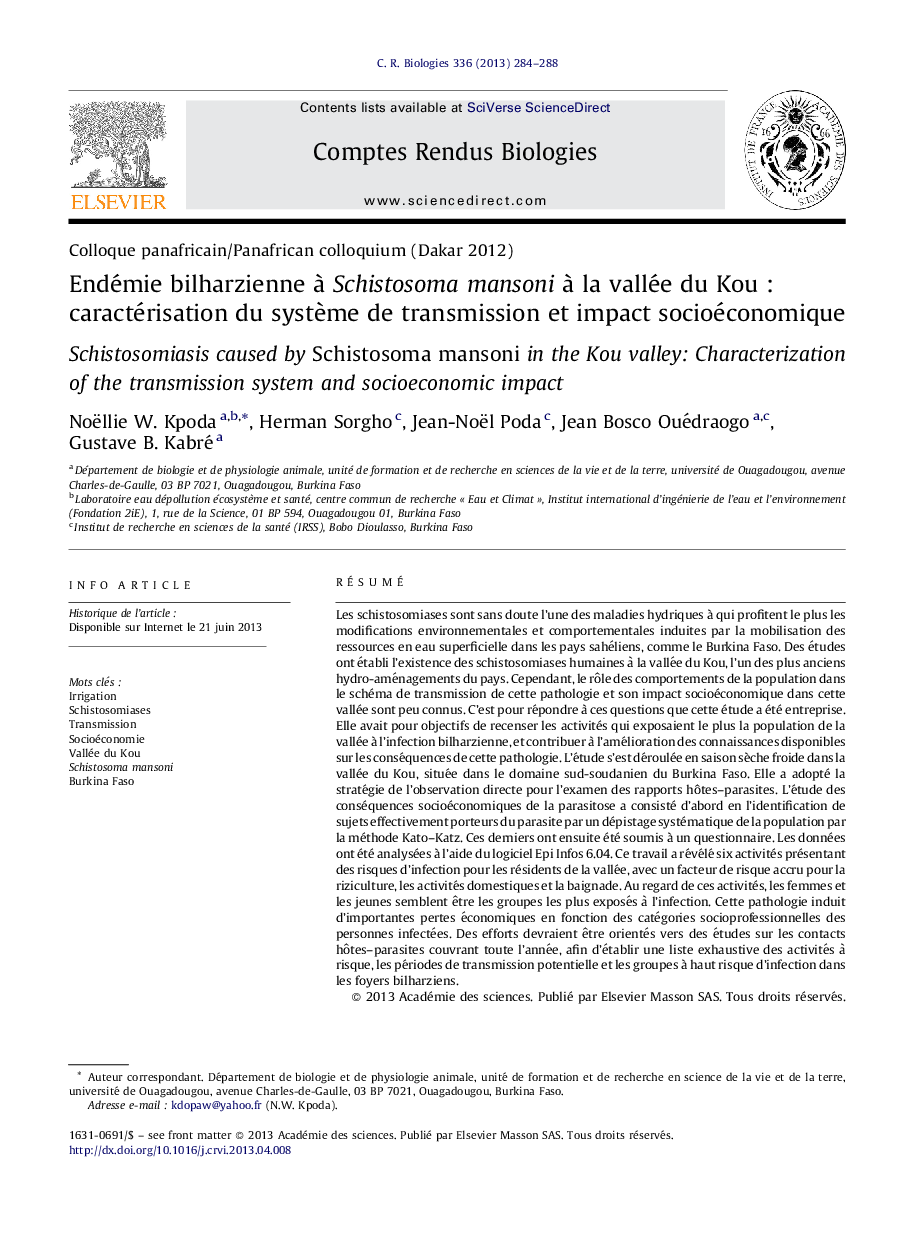| Article ID | Journal | Published Year | Pages | File Type |
|---|---|---|---|---|
| 2783618 | Comptes Rendus Biologies | 2013 | 5 Pages |
Abstract
Schistosomiasis is one of the waterborne diseases which benefit from environmental and behavioral changes induced by the mobilization of surface water resources in Sahelian countries, such as Burkina Faso. Studies have established the existence of human schistosomiasis in the Kou valley, one of the oldest hydro-agricultural zones in the country. However, the role of population behavior in the transmission pattern of this disease and its socioeconomic impact in this valley are poorly understood. It is in response to these questions that this study was undertaken. The objectives of this study were to identify activities that exposed most of the Valley's population to infection by schistosomiasis, and to contribute knowledge on the consequences of this disease. The study was conducted in the cold dry season at the Kou Valley, located in the South Sudanese area of Burkina Faso. It has adopted the strategy of direct observation to examine host-parasites interactions. The study of the socioeconomic consequences of the infection has been first to identify subjects that actually carry the parasite by screening the population by the Kato-Katz method. These were then subjected to a questionnaire. Data were analyzed using Epi Info 6.4. This work has revealed six activities at risk of infection for the residents of the Valley with an increased risk of factor for rice farming, household activities and swimming. In view of these activities, women and young people seem to be most vulnerable to infection. This disease causes significant economic losses as a function of socio-professional categories of infected persons.
Related Topics
Life Sciences
Agricultural and Biological Sciences
Agricultural and Biological Sciences (General)
Authors
Noëllie W. Kpoda, Herman Sorgho, Jean-Noël Poda, Jean Bosco Ouédraogo, Gustave B. Kabré,
